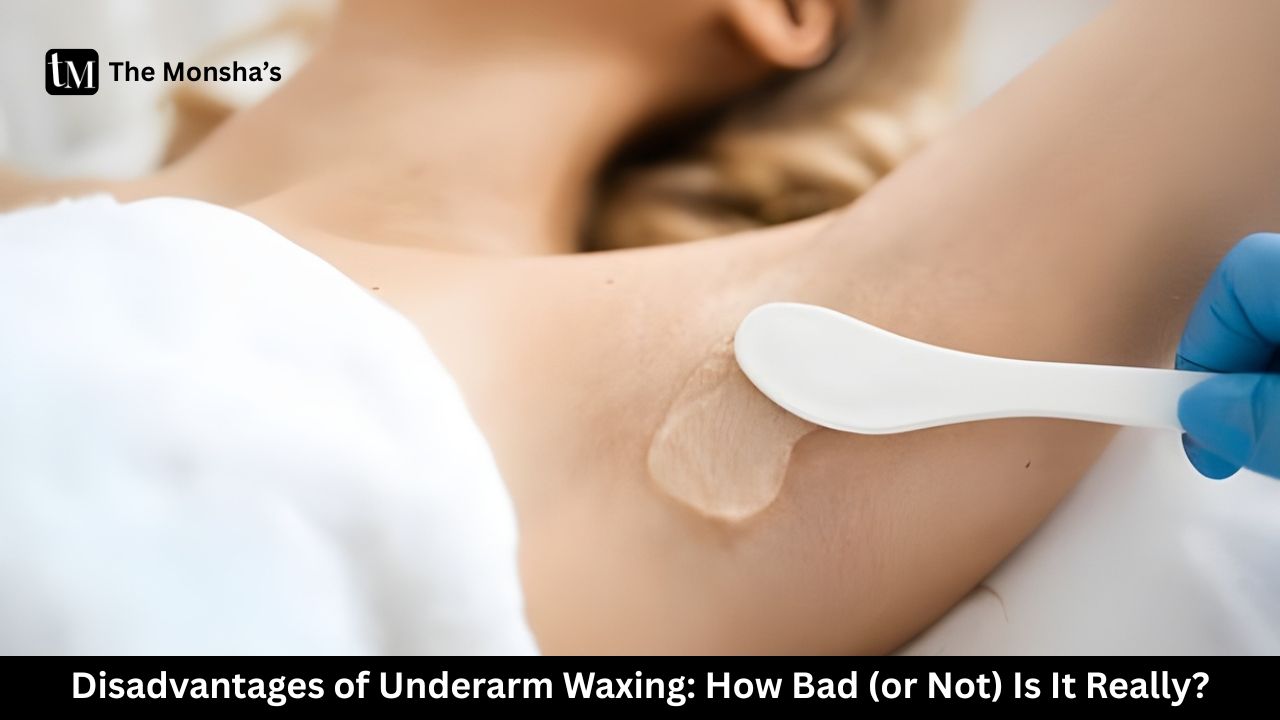
Underarm waxing can give you smooth pits, yes — but it's not all sparkle and no sting. Expect possible redness, bumps, burns, ingrown hairs, pigmentation, infection — especially if your skin is sensitive or technique is sloppy. Most downsides are temporary and avoidable with smart prep and aftercare. Don’t let Instagram glam fool you — know the risks before you dare “rip it off.”
I’ve waxed everything from legs to brows — but the underarms? That’s a battlefield. One wrong move, and you’re dancing around red pits for days. If you’re here, you’re probably asking: “Is underarm waxing safe?” “What if it goes wrong?”
Let me tell you: it can go wrong. But it also often goes okay — if you do your homework. This blog will walk you through every disadvantage, when it’s serious, and how to survive it like a skincare boss.
Before we jump into the dark side, here’s why folks wax their pits: smoother skin, longer hair-free stretch, fewer stubble days, and just that polished “done” look. Also, fewer nicks than shaving sometimes.
But underarms are special — the skin is thinner, there’s sweat, friction, and hair grows differently. So the stakes are higher.
Waxing rips hair out from the root. That means trauma to hair follicles, stress to the skin barrier, and a lot of vulnerability, especially under arms.
Underarms face additional challenges:
One study on axillary (underarm) skin showed that repeated hair-removal behaviors (waxing, plucking, shaving) increased irritation and could damage skin integrity over time.
(Here are the cons — each one with a little explanation)
Yeah, it hurts. You’re pulling hairs from follicles in a sensitive area. Even pros agree: waxing often causes sharp tugging pain, especially on first try.
Almost guaranteed in many cases. The heat + pulling action dilates blood vessels, causing redness and inflammation.
Because sometimes the wax grips a bit of skin (especially if too hot or the skin is thin). That can cause tiny tears, bruises, or “lifting” of the epidermis.
After hair regrows, sometimes it curls back into the skin, causing bumps or infections in hair follicles (folliculitis). Underarms are notorious for this.
Especially in darker skin tones or if you rub, pick, or got burns — pigment can deepen in the treated area.
If the wax is too hot, you might get burns. That’s rookie error. Also, over-exfoliating before waxing can weaken skin so it’s more vulnerable.
Additives in wax (rosin, fragrance, resins) can irritate or trigger allergies.
Torn skin + open follicles = entry points for bacteria. If hygiene is sloppy (dirty spatulas, reused wax), risk increases.
After waxing, your pits are rawer. Strong deodorants, alcohol, fragrances can sting and aggravate.

If something stays, worsens, or doesn’t improve in 48–72 hours — get it checked.
“Got my underarms waxed for the first time… miserable. The lady said it was good that I was bleeding.”
That’s raw. Many beauty forums echo similar regrets — bumps, dark patches, stinging for days.
If you see:
Don’t delay — a derm or skin specialist should see you.
Before Waxing
During Waxing
Aftercare
Maintenance
Each method has tradeoffs — choose what suits your skin and comfort.
Underarm waxing can give you smooth pits and days of relief — but it's not risk-free. If you’re going ahead, do it smartly: choose a qualified waxer, prep properly, patch test, and practice good aftercare. If pain, infection, or pigmentation start creeping in — listen to your skin and back off.
Don’t let one bad wax ruin your glow game.
Q. Does underarm waxing cause darkening?
Yes, in some cases — especially if burns, irritation, or pigment changes happen.
Q. How long do side effects last?
Mild redness goes away in hours to a day; bumps or ingrown hairs take a few days to a week.
Q. Can I wax during period?
Your skin is more sensitive, so many advise avoiding it.
Q. When can I re-wax if I had side effects?
Wait until skin fully healed, maybe 3–4 weeks or more.
Q. Is waxing safer than shaving for pits?
Not always. Depends on your skin, technique, hygiene, and tolerance.